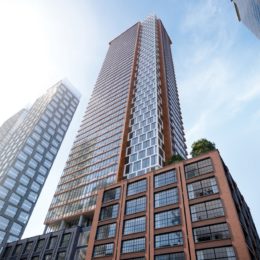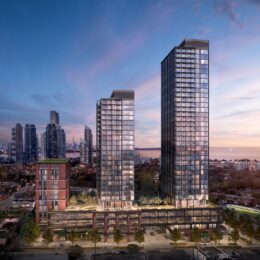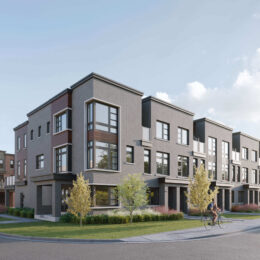What to Look for when Identifying a Toronto Neighbourhood’s Potential
In the past decades we have witnessed a condo boom in Toronto with certain areas and districts having seen more rise than others. In fact, the entertainment district and Cityplace have played witness to a 391% and 368% growth in condo units over a ten year span alone. We know that a good condo investment relies heavily on the neighbourhood that surrounds it. The condo doesn’t make the neighbourhood after all.
How do we identify which neighbourhoods are going to be the prime locations of a spike in value and condo activity? There are a few steps of research we need to consider before investing in a downtown Toronto Condo. This article will help give you all the information you should be stalking for.
Become a Neighbourhood Stalker

Walk around your neighbourhood and picture what it would be like to be a resident. Are there any clues or unsettling things you see?Are there a lot of for sale signs or cheap apartments for rent? Are the streets clean and the lawns maintained properly? Perhaps there aren’t enough good restaurants or grocery stores. A lot of quality neighbourhood research can be gained when you experience the neighbourhood on the street level.
Demographics
Identifying key demographic factors can help determine if certain neighbourhood is trending in a positive direction. Are they mostly young families? Or is your neighbourhood in close proximity to a college or university? Identifying key demographic insights and trend will determine the makeup of people your neighbourhood will be identified as.
If your investment is geared towards renting to people of a higher income, you need to make sure the community they are surrounded with is ideal. The resident who is looking for a quiet place will not be happy to find out your building is comprised of mainly young and loud renters. Have a conversation with a staff member, current tenants or even wait outside and see the type of people the building attracts.
When investing in a new Toronto condo project, you should be well aware of the neighbourhoods average income, age, and relationship statuses, if they are owning or renting, and other key demographic information.
Transit
 One determining factor in finding a new condo for Toronto residents is whether their location is in close proximity to a subway stop to the Toronto Transit Commission (TTC). The TTC is looking to expand their subway map and overall service in the next few years and newer locations are going to receive the added boost of quicker downtown commutes. Keeping track of these new changes could help you forecast newer opportunities in neighbourhoods begging to be increased in value by an influx of new commuters.
One determining factor in finding a new condo for Toronto residents is whether their location is in close proximity to a subway stop to the Toronto Transit Commission (TTC). The TTC is looking to expand their subway map and overall service in the next few years and newer locations are going to receive the added boost of quicker downtown commutes. Keeping track of these new changes could help you forecast newer opportunities in neighbourhoods begging to be increased in value by an influx of new commuters.
If the TTC is not going to be a great option, then the next thing you need to consider is a neighbourhoods ability to reach the major highways. With many Toronto residents relying on the Don Valley Parkway or the Gardiner to get to their offices in the Greater Toronto Area.
Factors like this add up to a condo’s transit score. A transit score is ranked as such:
| 90–100 | Rider’s Paradise World-class public transportation |
| 70–89 | Excellent Transit Transit is convenient for most trips |
| 50–69 | Good Transit Many nearby public transportation options |
| 25–49 | Some Transit A few nearby public transportation options |
| 0–24 | Minimal Transit It is possible to get on a bus |
Walking around
Many areas in Toronto have been enhanced by gentrification projects that can be attributed to a number of factors that are increasing its sense, curb and overall investor appeal. Areas such as Dovercourt village are rising in value. It has seen an influx of a lively rise in live music venues, a new Dark Horse Espresso location, as well as a new Bellwoods Brewery.
When a neighbourhood begins attracting new and exciting projects all at once, it could mean the start of a new appealing and prosperous location in the city. When a resident feels safer and more compelled to walk around the neighbourhood, the walk score of the neighbourhood will see a rise. A walk score is ranked as such:
| 90–100 | Walker’s Paradise Daily errands do not require a car |
| 70–89 | Very Walkable Most errands can be accomplished on foot |
| 50–69 | Somewhat Walkable Some errands can be accomplished on foot |
| 25–49 | Car-Dependent Most errands require a car |
| 0–24 | Very Car-Dependent Almost all errands require a car |
Crime
As a whole, the city of Toronto is one of the world’s safest places to live. According to a 2015 study, The Economist ranked Toronto as one of the safest major cities in the world, and the safest major city in the continent. That being said, different areas of Toronto have seen their own spikes of criminal activity. On a simple Google search one can see different news stories pertaining to their neighbourhood. A consistent amount of crime stories in your neighbourhood could lead to a negative perception of the neighbourhood can contribute to being a large turnoff for potential renters and can lead to lower value in your investment.
Schools
Are you looking to attract a family to your condo? Families are looking to put their children in a school with a solid reputation. If you are deciding between two similar condo projects and notice that one is located near a reputable school, you may be more likely to attract that ideal young family. Looking at reports compiled by The Fraser Institute that rank the top schools in Ontario is a good resource.
Always remember that a neighbourhood makes a condo better and typically not the other way around. When you search for a Toronto condo, make sure you do your research. If you’re looking to invest in a condo in the Toronto area, search for yours on TalkCondo.com and contact our condo experts today for more information on Toronto neighbourhoods.

















